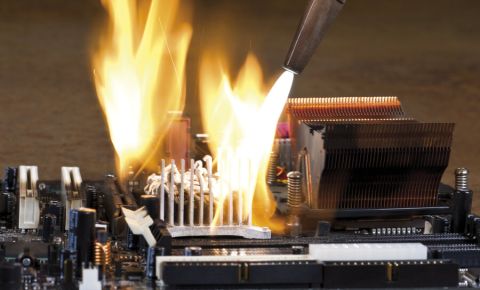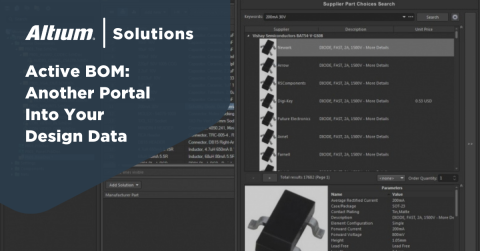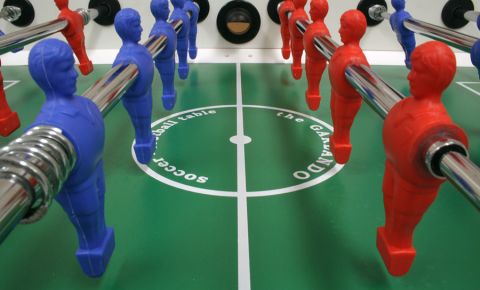Electronic Component Distributors Harnessing the Power of One-Stop Shopping
Every year, I spend time working on my house and car to keep them maintained. Trips to the hardware store include adding parts to my stash at home and I try to keep the trips to a minimum so I can enjoy my downtime. There’s nothing worse than chilling to tunes in my garage on a warm summer day only to find that I don’t have a part. Dropping everything to make a run to the hardware store means completely disrupting my afternoon.
So managing my existing parts inventory takes some thoughtful preparation. Without organization, the stash can grow and take over the limited space in my garage. It can get complicated and uses up my fun money, this way I spend some time every year getting stuff together in the garage.
Parts are a big part of an electrical engineer’s tool belt. There is an abundance of types, costs, and sourcing options. And just when you find the right memory stick the vendor stops making it. Or you find good pricing only to find the distributor sold them all to your competitor. New options for alternates, or alternative sourcing houses, arrive while others become obsolete. It’s an ever-changing world that swirls around your corporation’s products leaving your engineering, purchasing, and supply chain departments continually focused on parts—their cost, their availability, and their management throughout a product lifecycle.
Managing Parts Across the Enterprise Lifecycle Gets Fun
As design software for printed circuit assemblies evolved from its early beginnings, being an employee working practical matters has been akin to navigating Mark Twain’s Roughing It. While digitizing schematics, assembly drawings, and procurement pipelines seemed a grand idea, it turned out to be an exercise decades in the making. It has required tolerance for change and patience during lengthy implementations. It’s taken time to get the tools dialed in.
In the land of printed circuit boards, components have been an ongoing quest for single-source organization. As state-of-the-art tools evolve, Engineers continue adjusting while sophisticated information morphs and databases combine to become unified. Procurement departments slowly consolidate contacts as sourcing and costing become centralized. Supply chains keep smaller stores of materials given real-time flow integrated across the world’s markets.
Use Electronic Parts Distributors to Make Finding Parts and Alternates Easy
You’ve identified your design and elements to use, and you’ve drawn the schematic with customary symbols representing those devices. The mechanical engineers on your design team have allocated space and you’ll select package styles to accommodate all design constraints. There are other parameters to resolve such as value, tolerance, temperature range, and material type.
You can organize your search by running a simple BOM from the schematic, listing the parts drawn into your circuit blocks. Using the list makes discovery slightly easier as you begin your search on the worldwide market.
Vendor sites provide datasheets, but wouldn’t it be nice to have all vendors, and their parts, located in one place? Wouldn’t it be nice to have CAD models available for your PCB designers? What if your procurement and supply chain departments could see your choices, real-time, along with distributors’ competitive pricing and availability?
Capture the World of Components in One Place
Streamlining into One Component Database is a Good Idea
There continue to be gaps in database integration. Information is stored in several databases throughout the enterprise and throughout the larger community outside of the corporation. This was necessary for the early days of the cumbersome changeover to the eWorld. But the information continues to be wrangled and corporations are working diligently to consolidate. Time is money, after all, and eliminating archaic ways of using information provides forward momentum.
Certainly, everyone has their preferences for component distributors and on how to receive their necessary parts. But keeping up with the companies that are working to make distribution easier and ease the struggles of navigating the labyrinthian world of suppliers and manufacturing can save you the time and money you’d effectively spend on swathing yourself in the encyclopedic amount of knowledge anyway.
Consolidating information unifies and strengthens good ideas
With each new generation of software, intuitive interfaces allow consolidation of information, accessed by employees with differing job functions aiming toward the same end goal. Imagine your enterprise parts database and PCB library database consolidated and accessible early, with powerful information available in the same place over time.
Using a tool where design, purchasing, and supply chain can access information about one or millions of parts is available. Utilize Altium Designer’s strong Bill of Materials output generation, on top of its immaculate component library databases to create a real-time updating accurate portrayal of the necessary components you need with obsolescence and pricing goals in mind.
Don’t settle for anything less than what you need when it comes to taking your parts into consideration. Call an expert at Altium today to learn more.










